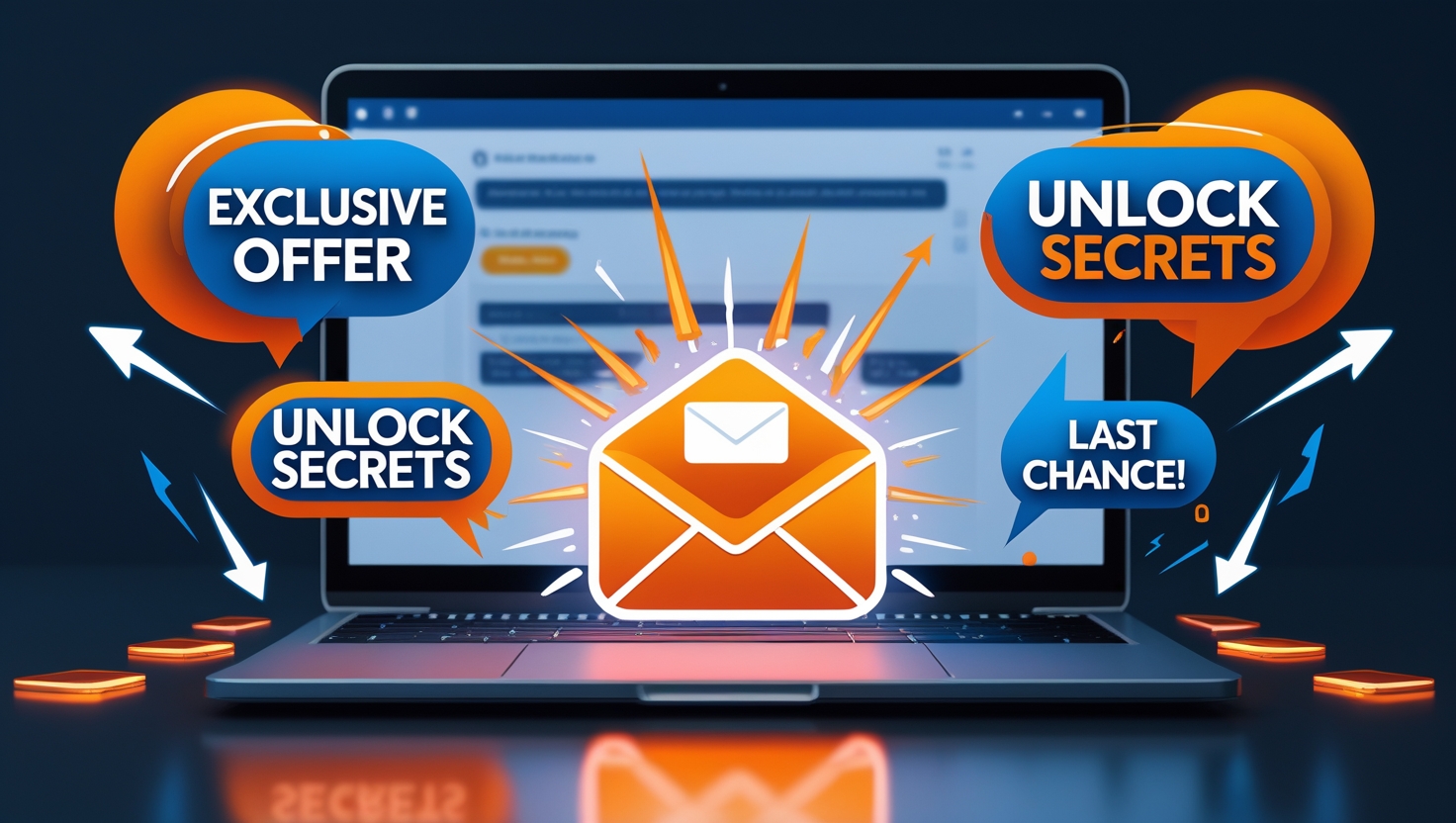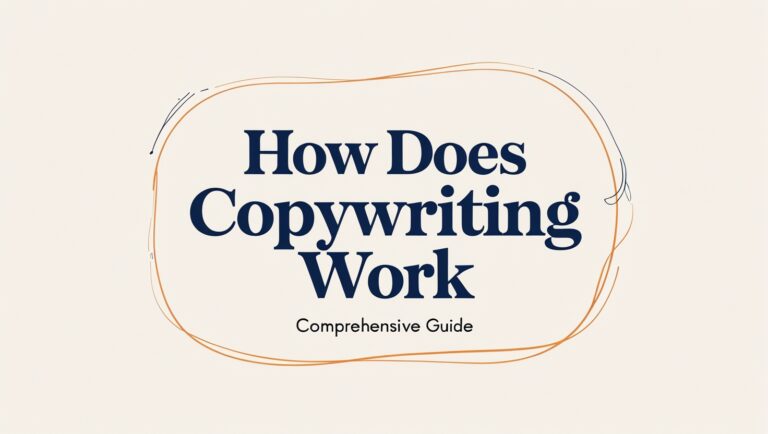Email Marketing – Unlock the Secrets to Crafting Irresistible Headlines
Email marketing headlines can make or break your digital outreach strategy. They determine whether your recipients open an email or scroll past in a crowded inbox. In this comprehensive guide, you will learn exactly how to craft attention-grabbing subject lines, avoid common mistakes, and apply proven psychological triggers to secure higher open rates and greater conversions. By mastering these tactics, you will boost brand reputation, retain customer loyalty, and maximize the impact of your email marketing efforts.
Table of Contents
- Introduction: Why Headlines Matter
- Key Elements of Effective Subject Lines
- Powerful Psychological Triggers
- Essential Best Practices (and Avoiding Spam)
- A/B Testing and Continuous Improvement
- Common Mistakes and How to Fix Them
- Conclusion & Call to Action
- FAQ
Introduction: Why Headlines Matter
The first thing any potential reader sees is your email’s subject line. This short sentence is often the deciding factor that compels them to open the message or pass it by. Your email marketing headlines play a crucial role in shaping the recipient’s perception of the content inside.
Furter, a well-crafted subject line grabs the audience’s attention by addressing their needs or piquing their curiosity. If your headline fails to resonate, the email’s content will remain unread, no matter how valuable it might be. Think of your headline as the first impression you make, and in digital marketing, first impressions can heavily influence conversion rates.
Effective email subject lines demand a strategic approach, taking into account spam filters, mobile devices, and audience segments. By employing the right combination of personalization, urgency, and exclusivity, you can dramatically increase open rates and click-through rates. In the sections ahead, you will find a deep dive into the key elements of subject lines and discover how to master the art of crafting irresistible email marketing headlines.
Key Elements of Effective Subject Lines
1. Clarity and Relevance
Your subject line should directly communicate what the reader can expect from the email’s content. Vague or overly ‘clickbait-y’ lines may generate curiosity; however, they often disappoint subscribers if the offer or information inside does not match. When readers realize the subject line is misleading, trust erodes quickly.
- Be Specific: Instead of “Great News Inside,” write “Exclusive Offer: Save 30% on Your Next Purchase.”
- Address Pain Points: Show how you can resolve a problem, such as “End Email Overwhelm: 5 Tips You Need Right Now.”
Exercises for Copywriters to Boost Creativity & Clarity
2. Personalization
Inserting a recipient’s name can transform a generic subject line into a personal call to action. By referencing the recipient’s interests or behavior, you show genuine care.
- Use the Recipient’s Name: For example, “Jamie, Your Guide to Stress-Free Email Marketing.”
- Segment Your Audience: Target specific audience segments with messages that match their interests, like “Special Strategies for Freelance Marketers.”
3. Brevity
Email subject lines often get truncated on mobile devices. Ideally, a concise headline of 40 to 50 characters can be a sweet spot because it grabs attention while also conveying essential information effectively.
- Front-Load Important Words: Place attention-grabbing words at the beginning, where they are less likely to be cut off.
- Test Different Lengths: Some industries see higher open rates with shorter lines; others may require a bit more detail.
4. Urgency and Scarcity
When recipients sense a limited-time offer or an exclusive opportunity, they are therefore more inclined to take immediate action. This sense of urgency can be a powerful motivator.
- Phrases to Try: “Last Chance,” “Ends Tonight,” “24-Hour VIP Access.”
- Limit the Frequency of “Urgent” Headlines: Overuse will desensitize your audience.
5. Value Proposition
Your subscribers ask themselves: “What is in it for me?” A well-crafted subject line highlights the biggest benefit they will receive, whether it is a discount, useful resource, or timely insight.
- Showcase the Benefit: “Boost Your Open Rates by 50% with This Simple Trick.”
- Invoke Curiosity: “The #1 Tool You Are Missing in Your Email Marketing Strategy.”
When these core elements come together, the result is a headline that persuades readers to open your message. Combine them strategically to shape your marketing approach and achieve higher open rates from every campaign.
Powerful Psychological Triggers

Well-crafted subject lines often tap into deeper emotions and motivations. By understanding basic psychology, you can create irresistible email subject lines that resonate on a deeper level.
1. Curiosity
Human beings are wired to seek answers. Asking an intriguing question or hinting at inside information can be the key to a higher open rate.
- Thought-Provoking Question Example: “What Could Triple Your Conversion Rate Overnight?”
- Sneak Peek Example: “Sneak Peek: Our Next Big Product Launch.”
2. Social Proof
We trust what other people have tested and approved. Including small hints of validation or testimonials can drive the success of your email marketing campaigns.
- Subtle Social Proof: “Join 5,000+ Marketers Using This Tactic.”
- Mention Influencers: “See How Top CEOs Optimize Their Email Subject Lines.”
3. FOMO (Fear of Missing Out)
Nothing compels immediate action quite like the fear of missing an exclusive opportunity. Limited-time offers or exclusive access can tap into this powerful motivator.
- Time-Sensitive Headline: “24 Hours Left: Unlock Exclusive Access to Our Webinar.”
- Emphasize Uniqueness: “Only for Our VIP Subscribers: Unmissable Insights.”
4. Authority
When you position yourself or your brand as an expert, people are more likely to trust your advice and offers. Subject lines that indicate industry authority can boost open rates.
- Authority Example: “Our Definitive Guide to Cutting-Edge Marketing Trends.”
- Mention Data or Studies: “New Research Shows How to Raise Open Rates by 47%.”
By blending psychological triggers like curiosity, social proof, urgency, and authority, you create compelling subject lines that go beyond mundane announcements. This deeper level of engagement helps keep your emails out of the trash folder and in your readers’ attention spans.
Essential Best Practices (and Avoiding Spam)
A strong subject line must capture attention and also navigate spam filters. Email service providers use sophisticated algorithms that analyze your subject line for spam-like content. Knowing how to sidestep these filters is crucial to get your message delivered.
1. Use Action-Oriented Language
Verbs encourage readers to act. Incorporating words like “discover,” “unlock,” or “learn” can subtly prompt immediate action.
- Sample Headlines: “Discover Your Path to Marketing Mastery” or “Unlock Exclusive Content Today.”
2. Avoid Spam Triggers
Certain words and punctuation patterns (e.g., “FREE!!!,” “100% Guaranteed”) are notorious for landing your emails in the spam folder. Maintaining a balanced tone is essential.
- Stay Away from Excessive Caps: “LIMITED TIME OFFER!!!” looks spammy.
- Minimize Over-Punctuation: Multiple exclamation marks or question marks can raise red flags.
3. Maintain a Conversational Tone
Recipients are likelier to open emails that feel like they come from a real person. A personal touch fosters trust and warmth, helping you stand out from generic marketing blasts.
- Sound Genuine: “Here is What You Need to Know Before Monday.”
- Ask a Subtle Question: “Have You Tried This Simple Marketing Hack Yet?”
4. Use Numbers or Data
Quantifiable results lend credibility to your headline, giving recipients a clear expectation of what they will gain.
- Data-Driven Headlines: “5 Best Practices for Higher Click-Through Rates,” “7 Email Marketing Hacks to Try This Week.”
5. Pay Attention to Preheader Text
The preheader text is an extension of your subject line and offers another opportunity to spark curiosity or clarify the benefit. In many inboxes, this snippet is the second line of text readers see.
- Match It to Your Subject: If your subject line says, “Master Email Marketing Headlines,” the preheader could add, “Read our top secrets for driving conversions.”
Following these best practices ensures your subject lines remain both engaging and “clean” in the eyes of spam filters. The more your messages land in the primary inbox, the better your chances of connecting with your target audience.
A/B Testing and Continuous Improvement
Even with the best principles in mind, it is impossible to predict how a subject line will perform without testing. Different audiences respond differently to various triggers, formats, and tones. That is where A/B testing (or split testing) takes center stage in improving the effectiveness of your subject lines.
1. The Basics of A/B Testing
In an A/B test, you split your email list into two groups. Each group receives a different subject line, while the rest of the email content remains the same. Tracking which version yields higher open rates (and click-through rates) provides valuable data on what resonates best with your audience.
- Test One Variable at a Time: Focus on subject line length, personalization, or use of urgency, never mix multiple major changes in a single A/B test.
- Use Adequate Sample Size: Too small of a segment can produce unreliable results, leading to misguided conclusions.
2. Key Metrics to Measure
Open rates are crucial, but click-through rates and conversion rates tell you how well the entire email performed beyond the headline. Sometimes a high open rate but low click-through indicates a mismatch between the subject line and email content.
- Open Rate: Measures how many recipients opened the email.
- Click-Through Rate: Measures how many people clicked a link inside the email.
- Conversion Rate: Focuses on completed actions, such as a purchase, signup, or download.
3. Continuous Improvement
A/B tests are not one-time events. Run them regularly to keep a pulse on shifting audience preferences, changing industry trends, and seasonal variations.
- Document Results: Keep track of what subject lines worked, which did not, and any patterns you notice.
- Iterate Your Strategy: Use insights from each test to refine future headlines, ensuring continuous improvement in your email marketing campaigns.
By systematically testing different subject lines, you ensure that your strategy evolves with your audience. As you gather more data, your email marketing efforts become more focused, driving better results with each campaign.
Common Mistakes and How to Fix Them
Creating irresistible email marketing headlines requires both art and science. Many marketers fall into predictable traps, damaging open rates and conversions. Here are some of the most common mistakes, and solutions to overcome them.
1. Overusing Clickbait
Headlines like “You Will Not Believe This Secret Hack!” may tempt readers initially, but they often feel misleading. Disappointment can lead to unsubscribes or spam complaints.
- Solution: Strike a balance between curiosity and honesty. If your subject line teases a benefit, make sure your email’s content delivers that promise.
2. Ignoring Your Target Audience
Crafting a universal headline might seem efficient, but it rarely converts well across different audience segments. Personalization goes far beyond inserting a name; it considers your subscribers’ demographics and unique interests.
- Solution: Segment your email list based on behavior, past purchases, or interests. Tailor your subject lines to each group to address their specific needs.
3. Failing to Update or Refresh
Sticking with the same approach indefinitely can stifle your results. Audiences evolve over time, and so do industry trends. A stagnant headline strategy will eventually plateau.
- Solution: Keep an eye on competitor strategies and emerging trends. Rotate your headlines, experiment with fresh angles, and incorporate new insights from your A/B tests.
4. Forgetting Mobile Users
Many subscribers check email on mobile devices, where subject lines can get truncated. A long subject line that looks fine on a desktop can appear cut off on a smartphone.
- Solution: Test how your headlines render on different devices. Try to place the most important words at the beginning of the subject line.
5. Overloading with Buzzwords
Phrases like “Revolutionary,” “Groundbreaking,” and “Game-Changing” sound impressive, but if the content does not live up to the hype, you risk losing credibility.
- Solution: Use powerful language sparingly and only when you can back it up with substantive proof or valuable insights.
By avoiding these pitfalls, you set the stage for consistently higher open rates. Remember that each campaign provides new data and experience, guiding you in fine-tuning your future headlines.
Conclusion
Your email marketing headlines serve as the gateway to your content, products, and brand narrative. An irresistible subject line is the first point of contact, the critical element that can propel your open rates and guide recipients to take immediate action. By leveraging clarity, personalization, urgency, and proven psychological triggers, you can craft compelling email marketing headlines that consistently yield better engagement.
It is now time to apply these strategies to your next email campaign. Implement one or two improvements at a time, test them via A/B testing, and measure the results. Keep refining and innovating, as the digital world evolves rapidly.
Ready to elevate your email marketing game? Put these headline best practices into action. Whether you are a small business owner or a seasoned marketer, powerful and irresistible email marketing headlines can dramatically transform your conversion rate, customer engagement, and overall success.
FAQ
1. How short should my subject line be?
Aim for 40–50 characters to accommodate mobile devices. This length ensures your key message remains visible, regardless of screen size.
2. How can I avoid landing in spam folders?
Use moderate punctuation, avoid spam trigger words (e.g., “FREE,” “Cash”), and maintain a professional tone. Keep subject lines relevant to the email content and test them regularly.
3. What is the best way to test my subject lines?
Perform A/B tests by sending two different subject lines to segments of your audience. Compare open rates, click-through rates, and conversions to determine the more effective option. Then, iterate based on the data gathered.
Recommended Reading & Resources
Incorporate these strategies into your daily workflow to witness a measurable uplift in opens and engagement. Mastering the art of crafting irresistible email marketing headlines will help you stand out, build trust, and drive consistent growth in your email marketing efforts.







One Comment
Comments are closed.